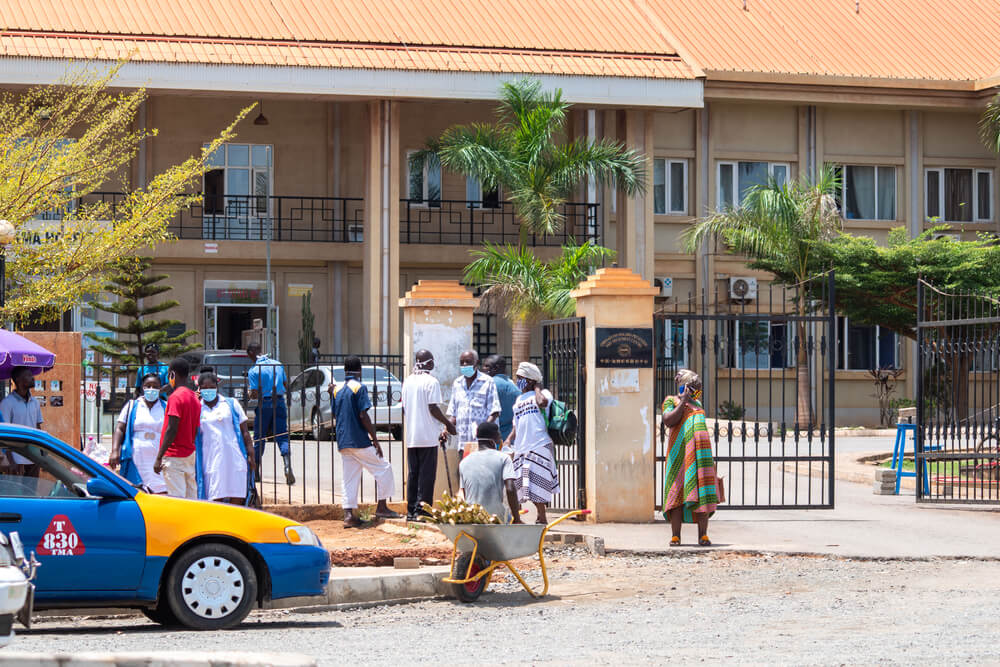ImpactAlpha, May 12 – Financing for emerging-markets infrastructure projects that have become more critical because of the pandemic – think hospitals – has become harder to secure, also because of the pandemic.
Debt worries and other economic uncertainties exacerbated by COVID-19 have made banks wary of the risks in many emerging and frontier markets, at the very time that financing for such infrastructure is most needed.
Acre Impact Capital, based in London, has found a low-risk, high-impact opportunity for impact investors, development finance institutions and others to help African governments close funding gaps for infrastructure projects like hospitals, schools, housing, transportation, energy, water and sanitation that will serve high-need areas and high-need populations.
Rockefeller Foundation and GuarantCo, a unit of Private Infrastructure Development Group, are backing Acre to provide the operational runway to build out and launch its first infrastructure fund. Acre’s pipeline consists of projects guaranteed by international Export Credit Agencies, or ECAs, which derisk roughly $150 billion in project financing every year.
“It’s probably one of the biggest industries that most mainstream finance people have never heard of,” Acre’s Hussein Sefian tells ImpactAlpha. “This is a business that has been done by banks almost exclusively, so the innovation here is to try to bring capital markets and institutional investors into this space. This is a completely new strategy, and in many ways, a new asset class for institutional investors.”
ECAs, government-owned institutions that facilitate the export of goods and services to emerging and frontier markets, provide credit-risk guarantees that cover up to 85% of a project’s costs. Acre aims to provide the capital for the remaining commercial tranche of 15%. That check, typically $15 to $20 million, unlocks the guarantee and the bank financing, enabling projects of $100 million to $150 million to proceed.
“There’s more demand for capital than there is available supply,” Sefian says, especially because of the reluctance of banks to fund the commercial tranche during the pandemic. Each dollar invested by Acre, then, catalyzes five to six dollars in bank financing.
“The involvement of an export credit agency in a transaction really helps derisk all of the risks typically associated with emerging markets,” says Seifan.
Capital mobilization
Acre looks for infrastructure projects that originate with a public tender from, say, the government of Ghana or Senegal. Bidders, typically from the U.S., U.K. the Netherlands or other advanced economies, present project plans and sources of financing—typically from commercial banks. The banks look to their domestic ECA to offset their financing risk on projects for which the Ghanian or Senegalese government is ultimately on the hook.
The firm targets projects that specifically benefit underserved communities. Examples: A chain of 12 hospitals in West Africa. A plan to drill 2,000 village boreholes for water access. Agricultural development centers to provide smallholder farmers with new growing techniques and access to inputs and machinery.
The pandemic has accelerated governments’ interest in building new hospitals and healthcare facilities in particular, says Seifan, as well as water infrastructure to improve hygiene and sanitation.
“A key part of our focus is capital mobilization,” Sefian says. ECAs can offer financing that is steeply discounted to alternative sources, such as bond markets, and for longer terms than commercial capital. “Part of our impact thesis is mobilizing not just infrastructure capital, but longer-tenor capital that’s priced attractively.”
Portfolio allocations
Sefian and the Acre team honed their knowledge in traditional banking and ECA lending. They had been building out the concept for the new financing vehicle for several years when they sent a cold intro through LinkedIn to Rockefeller’s Zero Gap program, an initiative to identify and develop mechanisms for financing the Sustainable Development Goals. Rockefeller provided a research and development grant in 2018 and a follow-on grant in 2020.
“We had never seen anyone looking at export credit agencies as impact agents,” says Rockefeller’s Adam Connaker. “But when you look at the market, the way it functions, the scale that it has and the mandate, there’s nothing that prevents it from being engaged.”
Acre’s model gives ECAs the impact credit they’re due, Sefian says.
“Export credit agencies are government-owned entities, so they do very careful environmental and social due diligence to IFC performance standards and equivalent standards like the Equator Principles,” he says. “No government wants to be in the press for supporting a hydropower plant that leads to displacement of people, or where displaced people are not adequately compensated.”
ECAs also conduct due diligence around governments’ ability to take on debt, anti-money laundering and anti-corruption measures, and other factors.
Thomas Belazis of Rockefeller’s innovative finance team says the foundation was attracted to Acre’s solution to a multi-trillion-dollar infrastructure gap, and specifically to the multi-billion-dollar ECA gap in emerging markets.
“Acre ties clearly to the capital mobilization and impact case of bringing more infrastructure to emerging markets in a way that is much more unique than just investing in the next infrastructure manager,” he said.
Disclosure: Rockefeller Foundation is a partner in the Catalytic Capital Consortium, a sponsor of ImpactAlpha.











